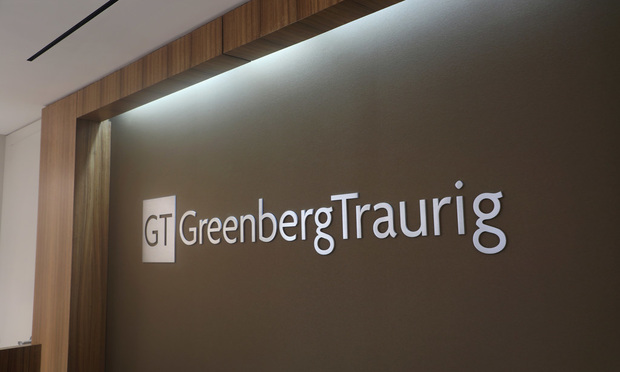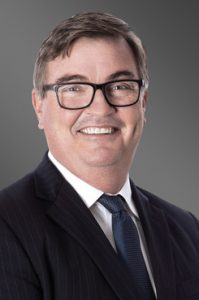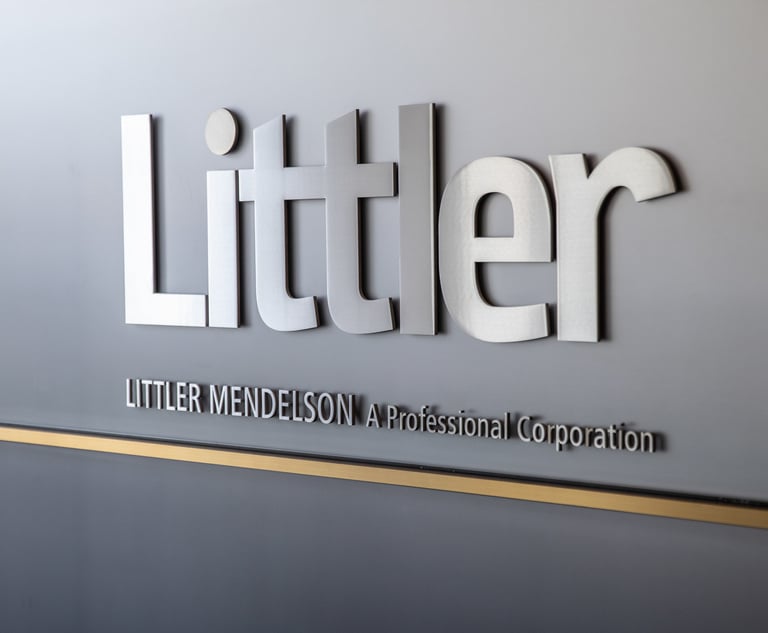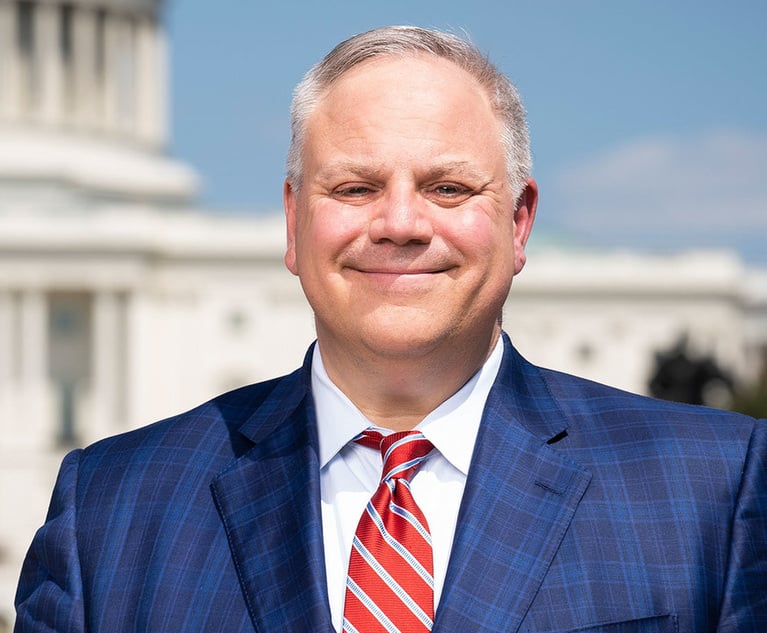Did You Say Dentons? Greenberg Traurig Has Already Positioned Itself as a 'National Firm'
Greenberg, No. 14 on the Am Law 100, has 31 offices across the U.S. That makes it, by Dentons' definition, a "national firm." But who says that's even what clients want?
October 24, 2019 at 05:00 AM
6 minute read
 (Photo: J. Albert Diaz/ALM)
(Photo: J. Albert Diaz/ALM)
When Dentons recently announced its bold plan to build "the first national law firm" in the U.S., Greenberg Traurig's leaders scoffed, pointing out that their firm had already done that.
If by "national law firm" Dentons meant achieving geographic scale—which is what it suggested when it noted that none of the nation's top 10 full-service law firms has offices in all 20 of the largest U.S. markets—then it had a point.
But Greenberg is pretty close.
Greenberg has the most U.S. offices—31—of the Am Law 50. Fourteen of them are located in one of the top 20 U.S. markets. And the firm is still growing.
Between January and September of this year, it added a net total of 133 attorneys. In all of 2018, the firm added a net of only 18 lawyers. It has seen a remarkable 6% net gain in head count year-over-year. In contrast, the Am Law 100 head count last year grew by an average of 3.64%.
This week, the firm nabbed a Morgan Lewis partner in New York, a Holland & Hart attorney in Denver and an Akerman lateral in Miami. The week prior brought a Sullivan & Cromwell partner and a Quinn Emanuel Urquhart & Sullivan counsel in New York. Greenberg kicked off October with three attorneys hires in New York.
Much of the growth has come from building out the firm's three new offices, said Greenberg CEO Brian Duffy. The firm opened an office in Milan, Italy and two U.S. domestic offices in the smaller markets of Minneapolis and Nashville. Other factors, he said, include the generally strong legal market and a potential future recession, which Duffy said is prompting attorneys to join Greenberg as a safer alternative.
"These factors create opportunities to move [to different] firms and we've been the beneficiary," Duffy said.
Greenberg's growth strategy is reflected in its financials. The firm lags behind the Am Law 100 in profits per equity partner and profit margins, while it comes out ahead in cost per lawyer and revenue growth, according to ALM data. The firm has long shunned the Cravath associate pay scale—a point Greenberg executive chairman Richard Rosenbaum made last year.
 Brian Duffy (Courtesy photo)
Brian Duffy (Courtesy photo)"Our lawyers are spread across a diverse geographic area, and we charge rates based on that market area," Duffy said. "That's a unique facet of Greenberg Traurig and how it has been built and what it is. Diversification is a real strength of the firm."
So when Dentons announced its grand new U.S. strategy to bolt on midsized U.S. firms with a dual partnership model structured as a verein—a plan it dubbed "Project Golden Spike" after the ceremonial 17.6-karat gold spike that tied together the Transcontinental Railroad in 1869—Greenberg chafed.
In an op-ed published in The American Lawyer just days after the Dentons announcement, Rosenbaum took a thinly-veiled shot at the verein.
"Recently there has been a great deal of noise about whether it would be a good idea to create a truly 'national law firm' in the United States," Rosenbaum wrote. "We are certain the answer is yes: We embarked on this mission in 1984 when we first left Miami to spread our wings throughout Florida and continued in 1991 when we opened in New York."
From Rosenbaum and Duffy's perspective, this broad strategy of establishing a full-service presence in legal markets large and small (Duffy uses the mantra "local presence, global reach") has always been the mission of Greenberg. In addition to the two new office launches in smaller markets, the firm plans to open between 15 and 20 global and domestic offices over the next decade, at a rate of roughly two per year, Duffy said.
While the firm's CEO isn't particularly a fan of the "national law firm" label that Dentons coined, he makes the case that Greenberg's broad ambitions of "covering every major U.S. legal market" align with the Dentons' definition. The difference is the structure.
And within the debate over structure—traditional growth versus a verein—is the central question of which model provides for smoother collaboration between disparate geographies, said Zeughauser Group consultant Mary K. Young. Other highly successful Am Law 10 firms such as DLA Piper, Baker McKenzie and Hogan Lovells, have also adopted a verein structure.
"I think, regardless of how you're organized, the challenge is within the leadership and management so you provide the integration you need to do this work seamlessly," Young said. "If you're in Cincinnati and you need to have something done in Los Angeles, it has to be seamless."
In the end, though, the squabble over who and what is a national firm may be moot, said Tom Clay, principal of consulting firm Altman Weil.
Altman regularly surveys law firm clients, and Clay has found no broad demand for a firm that is geographically diverse. Clients that need a firm in 20 different cities would have to be massive, and there just aren't many who could take advantage of such breadth.
"To a degree, this is clearly branding," Clay said. "Let's say there's a big business in Miami that needs high-level securities work. They want a high-level securities lawyer and don't really care how many offices you have."
Comparing the Big Four's scale to that of a law firm is fruitless as well, said Clay, as the two industries have completely different economics. And if the goal is to draw clients away from competitors, geography isn't the most compelling differentiator.
"What's the pitch?" Clay said. "You love your lawyer and the work they do for you, but we have an office in Tulsa and they don't?"
Similar Stories:
Greenberg Traurig Chair Takes Aim at What Makes a Truly National Firm
Dentons Combines With Two US Firms in One Go, Launching New American Strategy
This content has been archived. It is available through our partners, LexisNexis® and Bloomberg Law.
To view this content, please continue to their sites.
Not a Lexis Subscriber?
Subscribe Now
Not a Bloomberg Law Subscriber?
Subscribe Now
NOT FOR REPRINT
© 2025 ALM Global, LLC, All Rights Reserved. Request academic re-use from www.copyright.com. All other uses, submit a request to [email protected]. For more information visit Asset & Logo Licensing.
You Might Like
View All

Three Akin Sports Lawyers Jump to Employment Firm Littler Mendelson

Brownstein Adds Former Interior Secretary, Offering 'Strategic Counsel' During New Trump Term
2 minute read
Trending Stories
- 1'Digital Mindset': Hogan Lovells' New Global Managing Partner for Digitalization
- 2Silk Road Founder Ross Ulbricht Has New York Sentence Pardoned by Trump
- 3Settlement Allows Spouses of U.S. Citizens to Reopen Removal Proceedings
- 4CFPB Resolves Flurry of Enforcement Actions in Biden's Final Week
- 5Judge Orders SoCal Edison to Preserve Evidence Relating to Los Angeles Wildfires
Who Got The Work
J. Brugh Lower of Gibbons has entered an appearance for industrial equipment supplier Devco Corporation in a pending trademark infringement lawsuit. The suit, accusing the defendant of selling knock-off Graco products, was filed Dec. 18 in New Jersey District Court by Rivkin Radler on behalf of Graco Inc. and Graco Minnesota. The case, assigned to U.S. District Judge Zahid N. Quraishi, is 3:24-cv-11294, Graco Inc. et al v. Devco Corporation.
Who Got The Work
Rebecca Maller-Stein and Kent A. Yalowitz of Arnold & Porter Kaye Scholer have entered their appearances for Hanaco Venture Capital and its executives, Lior Prosor and David Frankel, in a pending securities lawsuit. The action, filed on Dec. 24 in New York Southern District Court by Zell, Aron & Co. on behalf of Goldeneye Advisors, accuses the defendants of negligently and fraudulently managing the plaintiff's $1 million investment. The case, assigned to U.S. District Judge Vernon S. Broderick, is 1:24-cv-09918, Goldeneye Advisors, LLC v. Hanaco Venture Capital, Ltd. et al.
Who Got The Work
Attorneys from A&O Shearman has stepped in as defense counsel for Toronto-Dominion Bank and other defendants in a pending securities class action. The suit, filed Dec. 11 in New York Southern District Court by Bleichmar Fonti & Auld, accuses the defendants of concealing the bank's 'pervasive' deficiencies in regards to its compliance with the Bank Secrecy Act and the quality of its anti-money laundering controls. The case, assigned to U.S. District Judge Arun Subramanian, is 1:24-cv-09445, Gonzalez v. The Toronto-Dominion Bank et al.
Who Got The Work
Crown Castle International, a Pennsylvania company providing shared communications infrastructure, has turned to Luke D. Wolf of Gordon Rees Scully Mansukhani to fend off a pending breach-of-contract lawsuit. The court action, filed Nov. 25 in Michigan Eastern District Court by Hooper Hathaway PC on behalf of The Town Residences LLC, accuses Crown Castle of failing to transfer approximately $30,000 in utility payments from T-Mobile in breach of a roof-top lease and assignment agreement. The case, assigned to U.S. District Judge Susan K. Declercq, is 2:24-cv-13131, The Town Residences LLC v. T-Mobile US, Inc. et al.
Who Got The Work
Wilfred P. Coronato and Daniel M. Schwartz of McCarter & English have stepped in as defense counsel to Electrolux Home Products Inc. in a pending product liability lawsuit. The court action, filed Nov. 26 in New York Eastern District Court by Poulos Lopiccolo PC and Nagel Rice LLP on behalf of David Stern, alleges that the defendant's refrigerators’ drawers and shelving repeatedly break and fall apart within months after purchase. The case, assigned to U.S. District Judge Joan M. Azrack, is 2:24-cv-08204, Stern v. Electrolux Home Products, Inc.
Featured Firms
Law Offices of Gary Martin Hays & Associates, P.C.
(470) 294-1674
Law Offices of Mark E. Salomone
(857) 444-6468
Smith & Hassler
(713) 739-1250









